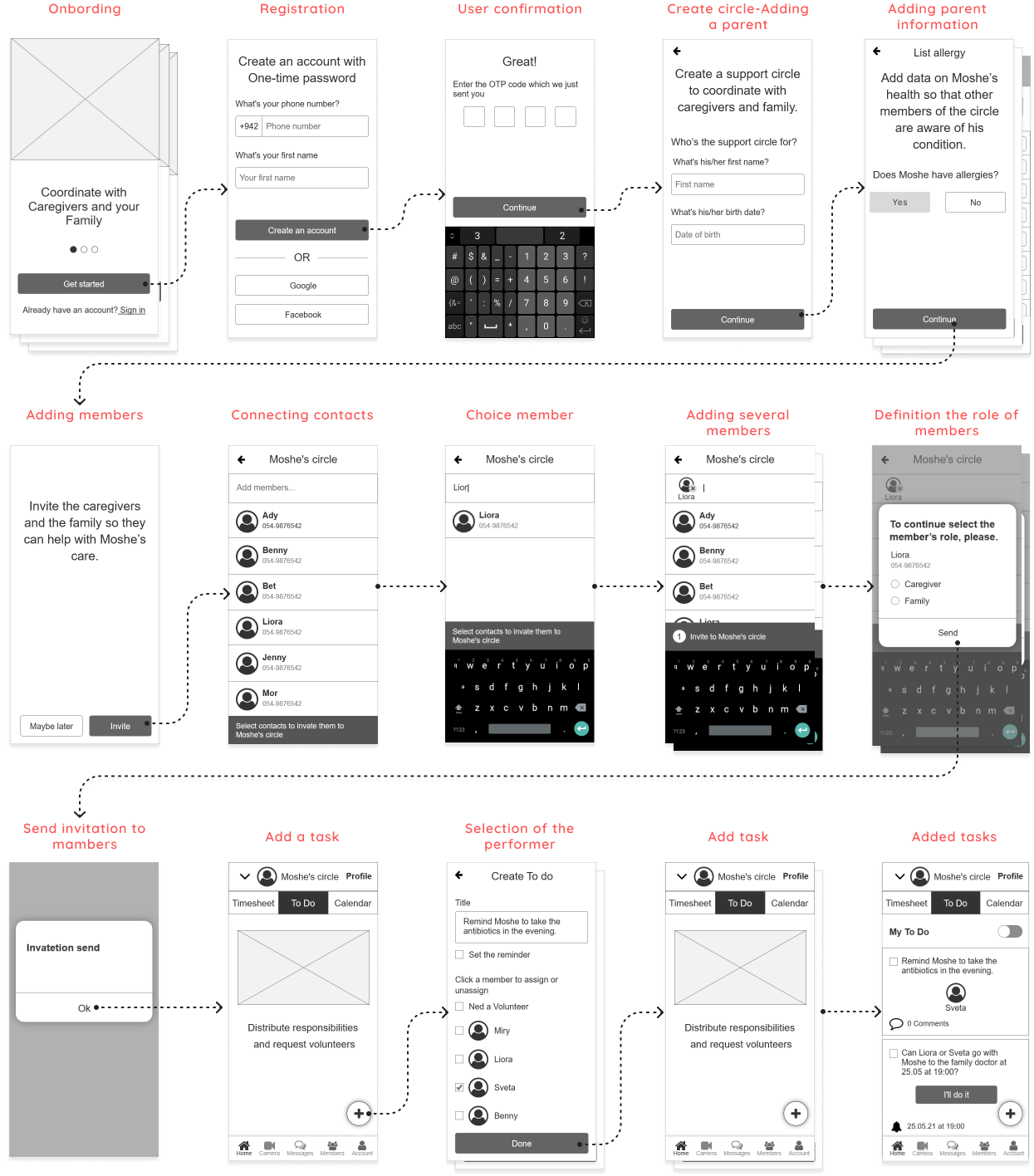App for
joint care
of the elderly
Care Together – an app designed to help families and caregivers coordinate and manage elderly care effectively

Care Together – an app designed to help families and caregivers coordinate and manage elderly care effectively

Market research, User research and competitors, Architecture, Wireframe, UI
UX/UI designer
According to the data from the Central Bureau of Statistics, the proportion of elderly population in Israel has been steadily increasing in recent years. It is projected that by 2030, the percentage of elderly people will exceed 14% of the total population, with half of them being aged 75 years and older. This implies that with each passing year, more families with elderly relatives are facing a growing need for care and support.

In order to gain a deeper understanding of the users, I conducted interviews with individuals between the ages of 47 and 67 who have elderly parents that are being taken care of by carers.
Relatives and carers share the tasks of caring for an older adult.The complexity of control leads to the fact that important things can be left without attention.
If the caregiver does not go to work, she does not inform the older adult and his family. As a result, the older adult is left for several days without care.
Carers do not know what medicines and how an older adult should take them. But it is they who have to go to the doctor and pharmacy. Therefore, relatives write lists, hang them on the wall and call and check which medications the older adult has taken.
I researched several significant players in the elderly care market and drug management apps.

Lotsa Helping Hands

Care Zone

Caring Bridge

Caring Village
I researched popular apps for task management, group communication and intelligent home remote control.

Tick Tick

Things to Do-Task

Google Tasks


Brightwhee

Mi Home

Smart life
It needs to create a calendar with the ability to create tasks, share them with other team members and mark them as completed.
It should be possible for the carer to mark the time she came and went so that the older adult's family knows that he has received care.
It is necessary to create a list of medications with the ability to edit them, control the stock of medicines and mark the time of taking them.
After analyzing the problem and conducting user interviews, I created the application architecture with the goal of visualizing the user flow and identifying the necessary screens. This helped me optimize the user flow and minimize the number of screens required for users to achieve their goals.

After gaining a general idea of the specific tasks the user wanted to perform, I started the design process. Before working in Axure, I created sketches of the main screens on paper to identify and fix bugs early in development.

To refine my ideas, I then created low-fidelity wireframes and conducted usability testing before proceeding to the final design. During this stage, I realized that the onboarding process was too complex and decided to split it into two stages:

Creating an elderly care circle and assigning tasks to caregivers

Assignment of tasks among members of the circle involved in caring for an elderly person

Generating a medication list with reminders for restocking

Creating an elderly care circle and assigning tasks to caregivers